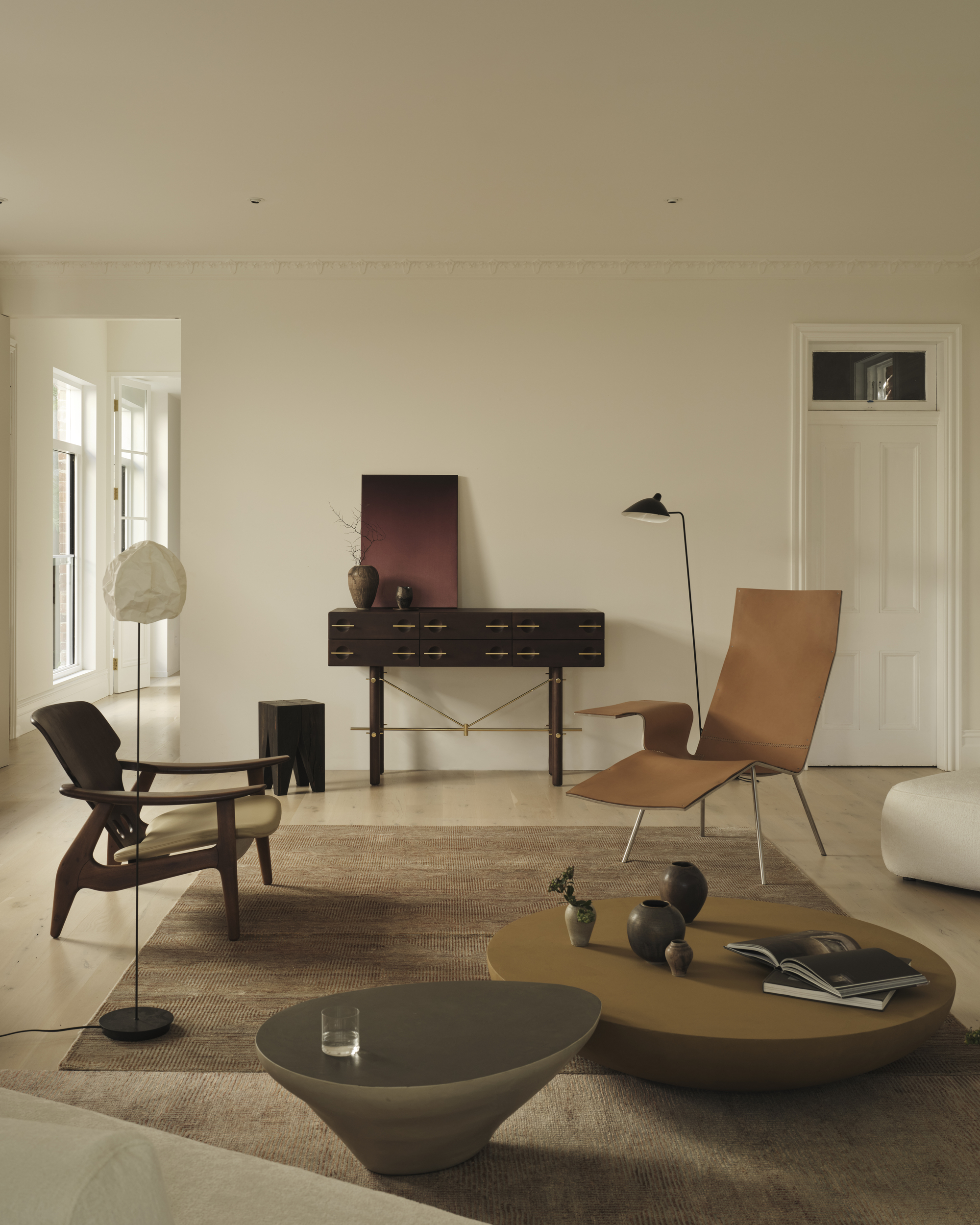
Good living room design is all about energy. When you've got the seating plan, decor, and lighting right, it creates a certain magic that makes you want to gather, recline, and enjoy. Get it wrong, though, and it's not good news. Thankfully, that's where the four-inch seating rule can help.
How can such a small measurement make such a big impact? The four-inch seating rule is a furniture placement rule that highlights the correlation between seating height and the flow of conversation. "In interior design, the four-inch rule refers to the guideline that the seat height difference between sofas and chairs in the same room should not exceed four inches," explains Monika Puccio, interior expert and head sofa buyer at Sofa Club.
It may seem trivial, but paying attention to these small details can pay dividends, influencing the way a modern living room feels. But, like with all interior design rules, there are also times when it's best to ignore it — so let's take a closer look, below.
What Is the Four-Inch Seating Rule With Sofas?

First and foremost, the four-inch seating rule is an easy guide to help you create the best living room seating arrangement. How? "The rule that seating should not exceed more than four inches in height difference is largely because when seat heights are too mismatched, it results in people sitting at different levels, which can make conversation feel awkward and disrupt the proportions of a room," Monika Puccio explains.
Sofas and accent chairs are typically the focal point of any living area, and following the four-inch rule helps to create a sense of visual cohesion and balance in the interior design.
You want to create a room that invites good conversation rather than inadvertently discouraging it. "When seating heights are more aligned, the room feels as though it has been thoughtfully curated, which then makes it more inviting," adds Monika.
"I would recommend using the four-inch rule in larger, open spaces when you want the entire area to feel cohesive," she continues. "Oftentimes when people have a lot of space to work with, there’s a tendency to fill it without much direction."
Instead, adhering to this rule ensures the space feels much more intentional, and can even help you make an open-concept space feel cozier.
When Should You Ignore the Four-Inch Seating Rule With Sofas?

Like all living room interior design rules, the four-inch seating rule is not necessarily a one-size-fits-all scenario.
For instance, if you are creating multiple zones in one room, such as a reading nook or a conversation pit, it’s fine to mix sofa and chair heights. As the areas are designed for different purposes, uniformity is not necessary in this case.
Another time to forego the four-inch seating rule is if you're incorporating "curved sofas and furniture that naturally blurs the lines of more formal rules favoring the creation of softer silhouettes," says Monika.
Long and low furniture pieces are often used to illustrate a specific visual effect or design aesthetic — many mid-century modern and contemporary minimalist spaces use furniture in this way. "Not only can these styles appear more cozy, but they also add an element of interest to the space," adds Monika.
That's not, of course, to say that this seating guide should be considered an outdated interior design rule in 2025 (a time in which curved sofas rule). "For the most part, the four-inch rule remains timeless; there has simply been a shift in how people are applying it," says Monika.
A seat with a high back, like this mid-century leather armchair, is a great way to create the illusion of height without impacting seating feng shui. The seat height can remain low, while the high back creates layers.
Finding a chic accent chair for only £70 is a rare find these days. Sling back chairs are the style of the season, and often have a deeper seat than it seems — perfect for a living room with a lower seat level.
Curved sofas add a beautiful contemporary look to a room, yet typically sit a bit lower than a more traditional style. However, like Monika mentioned, they are great pieces to mix and match.
Before you start designing a living room built for gathering and good conversation, it is always worth double-checking that your living room feng shui is in alignment. While the four-inch seating rule isn't always necessary, it's an easy place to start.







